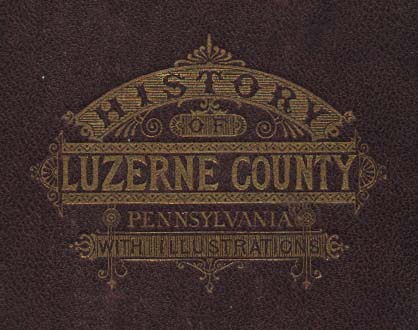
News & announcements
Saving your history
Early accounts
Maps
Nearby towns
People
Churches
Schools
Municipal
Organizations
Businesses
The mines
Transportation
Streets
Buildings
Entertainment
Celebrations
Sports
Ethnic groups
Munsell on South Heberton, 1880
South Heberton
Joseph Birkbeck was born at Todd's House, Windmer End, near Brough, Westmoreland county, England, May 2nd, 1802, and married Elizabeth Johnson, who was born at Buck Hills, Stainmoor, near Brough, February 12th, 1804. They came to America in 1844, and the same year located at South Heberton, where he bought a tract of land of Edward Lynch. Here he built a log house, the first in this then wilderness, on the site of the frame house built in 1860, now occupied by his widow, Mrs. Elizabeth Birkbeck. The next settler was N. Howes, who purchased land of Mr. Birkbeck and built the first frame house in this section, just west of Birkbeck's. Soon after this other settlers came in, and ere long the forest began to melt away.
Coal fields were developed and the prospect of a large consequent population and demand for building lots led Mr. Birkbeck to have surveyed the town plot of South Heberton, and soon a thriving village was growing up, depending on surrounding mining towns for support.
Mr. Birkbeck's was the first clearing in this then forest; in it were raised the first crops, and here the first orchard was set out.
The first child born at South Heberton was Elizabeth, daughter of Joseph and Elizabeth Birkbeck, born in 1945. The first death at this place was that of William, son of Joseph and Elizabeth Birkbeck, which occurred Feb. 11th, 1846. He was aged 4 years, 3 months and 15 days.
In 1845 and 1846 Mr. Joseph Birkbeck cut the road through the woods from South Heberton through Eckley to Buck mountain. Eckley was then known as Shingletown, as no business was done there except by two or three parties whose occupation was making shingles, carting them to either White Haven or Hazleton and trading them for the necessities of life, such as whiskey, pork and tobacco.
The first store at South Heberton was kept by a man named Feist, a little west of Birkbeck's. Soon afterward a Mr. Minig kept a little store near Feist's.
The first tavern was kept by N. Howes, where Joseph Jamison now lives, a little west of Birkbeck's. Previous, however, to the opening of Howes's tavern, Mr. Birkbeck accommodated parties who were prospecting in this region for anthracite deposits, with the best the house afforded. Among the guests who partook of Mr. and Mrs. Birkbeck's hospitality, were Judge Tench Coxe, Prof. William F. Roberts, Hon. Arlo Pardee, Mr. Leisenring, Mr. Sharp and others.
The first school house at this place was built in 1878, and is a frame building.
When Mr. and Mrs. Birkbeck moved into this then wilderness they were far from any settlement. At Morrison, near White Haven, was the nearest store, and Straw's, over in Butler, was the nearest grist-mill. For meat they depended upon such as the forest afforded, which was taken in different ways. Mrs. Birkbeck related to us the manner in which she captured the "pride of the forest." One afternoon in the fall of the second year after they had cleared a patch on the hillside above the house, her attention was attracted by some dogs making a "great fuss" in the clearing, and she discovered a noble buck with his wide spreading antlers coming down the hillside. The thought flashed through her mind what nice venison he would make. With a noble matronly spirit of providing for an impoverished larder, she laid down her child Elizabeth, caught up an ax that lay near by, and started for the deer. The deer seeing here, and having been worried and maddened by the dogs, changed his course direct for Mrs. Birkbeck. She, not dreaming of the danger she was in, met the proud antlered son of the forest, and the battle commenced. The matron finally struck the deer with the ax on one of his fore-legs, and breaking it brought him to the ground, where with the aid of the dogs the venison was soon secured.
South Heberton now contains a church (Methodist Episcopal), a school-house, two stores, two hotels, a tin shop, a shoe shop, a blacksmith shop, three saloons, and about 500 inhabitants.
-- From Munsell, William Watkins. History of Luzerne, Lackawanna and Wyoming Counties, Pa.: With Illustrations, and Biographical Sketches of Some of Their Prominent Men and Pioneers. New York: W. W. Munsell & Co., 1880.